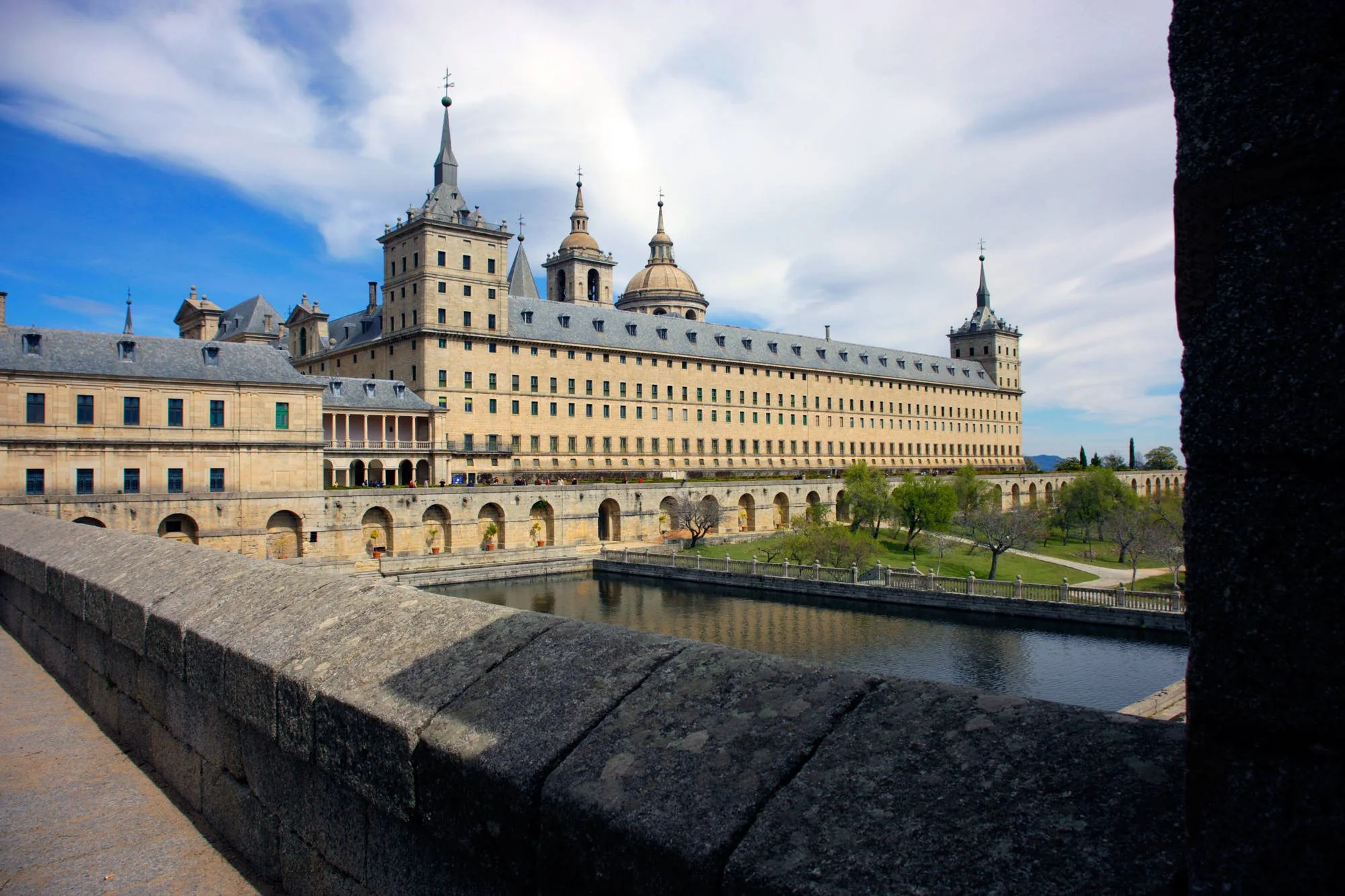
Cookie settings
We use our own and third-party cookies in order to offer our services, display videos, obtain statistics and offer personalized advertising.
For more information, please read our cookies policy.

A building whose architectural style is inspired by the Classicist canons interpreted in a sober and harmonized way by Juan Bautista de Toledo and Juan de Herrera. Felipe II wanted the building to consist of: Pantheon, Basilica, Convent, College, Library, Palace, etc. It should assume the functions of a Royal Residence, Monastery and Royal Pantheon, mixing practice with symbolism.
Juan Bautista de Toledo started the construction in 1563. He built the general floor of the building, the Southern façade and the Patio de los Evangelistas (Courtyard of Evangelists). With his death four years later, Juan de Herrera, his apprentice, was who completed its construction in 1584, with such success that his work meant the creation of the Herrera´ s school. Its architectural style is based on the prominence of the purity of line against decorative elements such as Ionic and Doric columns and triangular gables, as well as pinnacles with balls.
It is a rectangular palace with four towers that have been built on the angles, remaining us the form of a gridiron that was the instrument of martyrdom of St Lorenzo, and they are covered by slate spires following the Austria dynasty´ s style. It has three monumental facades, and a sculpture of St Lorenzo by Juan Bautista Monegro and the coat of arms of the prince Felipe II, founder of the monastery, dominate the palace. All its rooms are furnished loyally following the style and liking of the period. There is a splendid and beautiful tapestries collection about pictorial themes that were made in the Real Fábrica de Tapices de Santa Bárbara (Santa Bárbara Royal Tapestry Factory) in Madrid over Goya, Bayeu or Mengs´ cartoons. We should highlight the Sala de las Batallas (Hall of Battles), decorated with frescoes from the XVI Century, and one of the Salas de las Reinas (Queens´ Halls), decorated with tapestry in Pompeya´ style. The “rooms of fine woods” are located in the Torre de las Damas de Palacio (Tower of Palace Ladies). They have been designed and covered with embroidered silks.
The church of the monastery has its access through the Patio de los Reyes (Courtyard of Kings) whose name comes from the six statues of the Kings of the Old Testament that are placed over pedestals in the temple façade. It has a Greek cross floor. The vaults were painted with frescoes by Lucas Cambiaso and Lucas Jordán. The Major Altar altarpiece is decorated with paintings by Tibaldi and Zuccaro. Under this altar, we can find the Kings´ pantheon by Crescenzi that was started during Felipe III´ s reign in a Baroque style, with an octagonal floor. Finally, the Princes´ pantheon, from Isabel II´ s reign, consists of nine chambers that are the burial place of queens, princes and infants.
The Chapter Houses constitute a real museum of painting with works of artists such as el Greco, Carreño, Sánchez Coello, Tiziano, Veronés, Van der Weyden and El Bosco.
The Library, of huge and harmonized proportions, was designed by Juan de Herrera. It is decorated with beautiful frescoes by Tibaldi and Pellegrino that represent allegories to the seven liberal arts dominated by Philosophy and Theology. It has an important collection of manuscripts of relevant historic, artistic and bibliographic interest.
Address and telephone
Opening times
Prices
If you see any mistakes or want to add anything to this information, please contact us.
To display this map, you have to accept analytical and advertising cookies. Cookie settings.